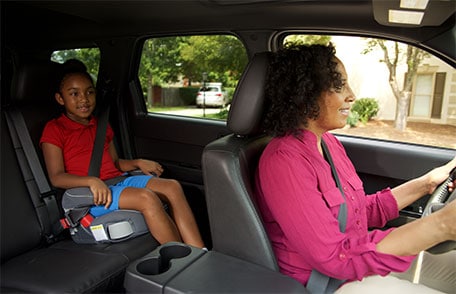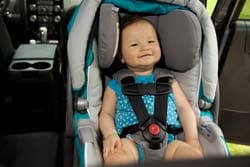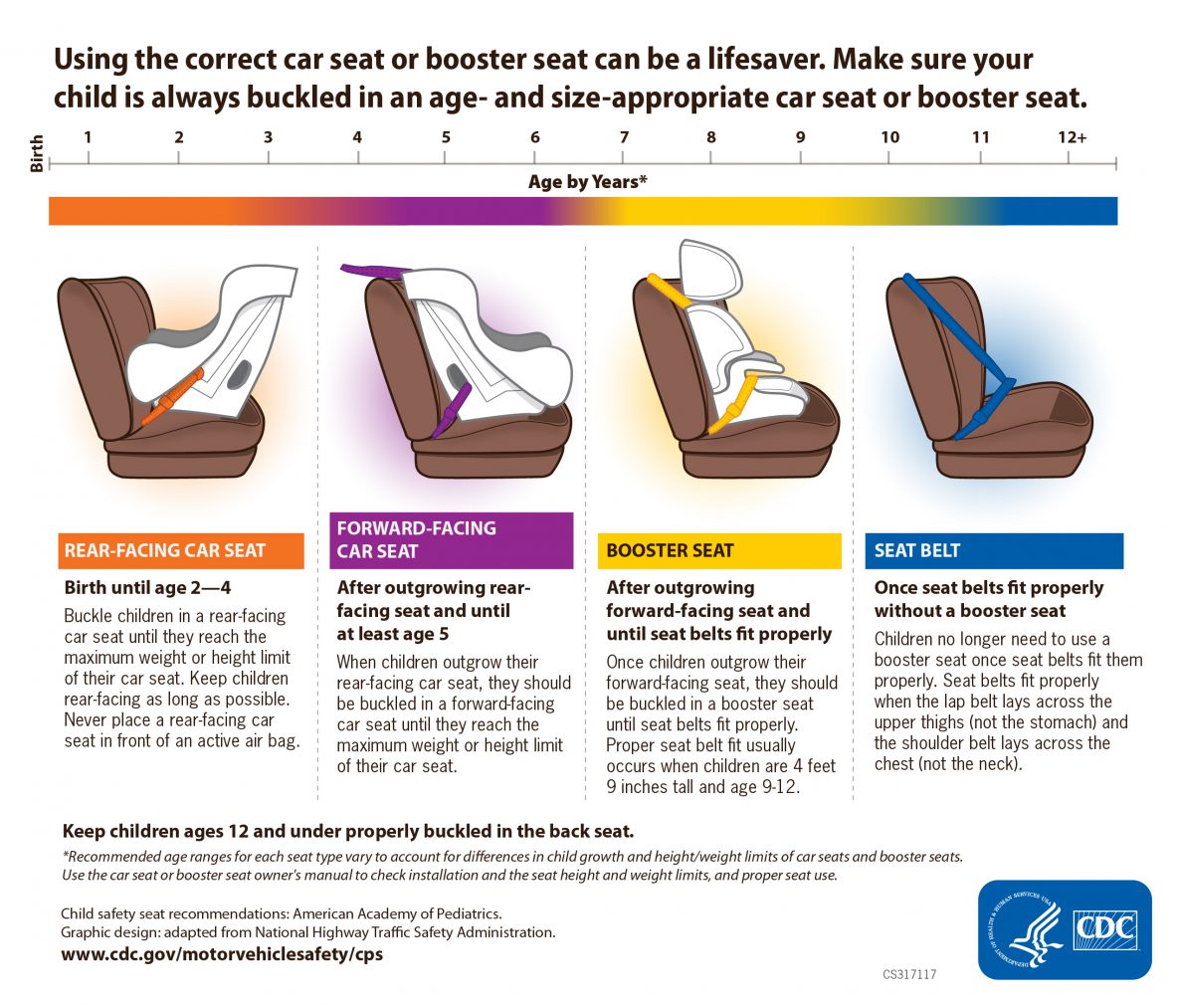Child Passenger Safety

Whenever you’re on the road, make sure children aged 12 and under are always properly buckled in the back seat in a car seat, booster seat, or seat belt, whichever is appropriate for their weight, height, and age.
Reduce Their Risk
In the United States, motor vehicle crashes are a leading cause of death among children. In 2018, 636 children 12 years old and younger died in motor vehicle traffic crashes, and more than 97,000 were injured. Of the children 12 years old and younger who died in a crash in 2018 (for which restraint use was known), 33% were not buckled up. Parents and caregivers can make a lifesaving difference.
Data show that:
- In 2017, restraint use saved the lives of 325 children aged 4 years and younger.
- Car seat use reduces the risk for injury in crashes by 71–82% for children, when compared with seat belt use alone.
- Booster seat use reduces the risk for serious injury by 45% for children aged 4–8, when compared with seat belt use alone.
Know the Stages
Make sure children are properly buckled in a car seat, booster seat, or seat belt–whichever is appropriate for their weight, height, and age.
- Use a rear-facing car seat from birth until ages 2–4.
- For the best possible protection, infants and toddlers should be buckled in a rear-facing car seat, in the back seat, until they reach the maximum weight and height limits of their car seat.
- Check the car seat manual and labels on the car seat for weight and height limits.
- After outgrowing the rear-facing car seat, use a forward-facing car seat until at least age 5.
- When children outgrow their rear-facing car seats, they should be buckled in a forward-facing car seat, in the back seat, until they reach the upper weight or height limit of their car seat.
- Check the car seat manual and labels on the car seat for weight and height limits.
- After outgrowing the forward-facing car seat, use a booster seat until seat belts fit properly.
- Once children outgrow their forward-facing car seat, they should be buckled in a belt-positioning booster seat, in the back seat, until seat belts fit properly. Seat belts fit properly when the lap belt lays across the upper thighs (not the stomach) and the shoulder belt lays across the chest (not the neck).
- Once seat belts fit properly without a booster seat, use a seat belt on every trip.
- Children no longer need to use a booster seat once seat belts fit them properly. Seat belts fit properly when the lap belt lays across the upper thighs (not the stomach) and the shoulder belt lays across the chest (not the neck).
- Proper seat belt fit usually occurs when children are about 4 feet 9 inches tall and aged 9–12 years. Seat belt fit can vary by vehicle so check fit in all vehicles. For the best possible protection, keep children properly buckled in the back seat.
Buckle Up Every Age, Every Trip

National Child Passenger Safety Week 2020 is September 20–26. Make sure you properly buckle children on every trip.
Install and use car seats and booster seats according to the car seat manual. You can get help installing them from a certified child passenger safety technician. Find a child passenger safety technician near you.
Buckle all children aged 12 and under in the back seat.
- Buckle children in the middle seating position of the back seat when possible (using a lap and shoulder belt), because it is the safest position in the vehicle.
- Airbags can kill young children riding in the front seat. Never place a rear-facing car seat in front of an airbag.
- Buckle children in car seats, booster seats, or seat belts on every trip, no matter how short the trip.
- Set a good example and help protect everyone in the car by always using your seat belt.

Additional Resources
- CDC Child Passenger Safety Graphics: How to Avoid the Most Common Mistakes
- CDC Child Passenger Safety website
- National Highway Traffic Safety Administration: Child Safety Information for Parents and Caregivers
- American Academy of Pediatrics (AAP) Links:
- AAP website for parents (Healthychildren.org): Car Seats
- AAP Child Passenger Safety Policy Statement
- AAP Child Passenger Safety Technical Report






















.png)











No hay comentarios:
Publicar un comentario